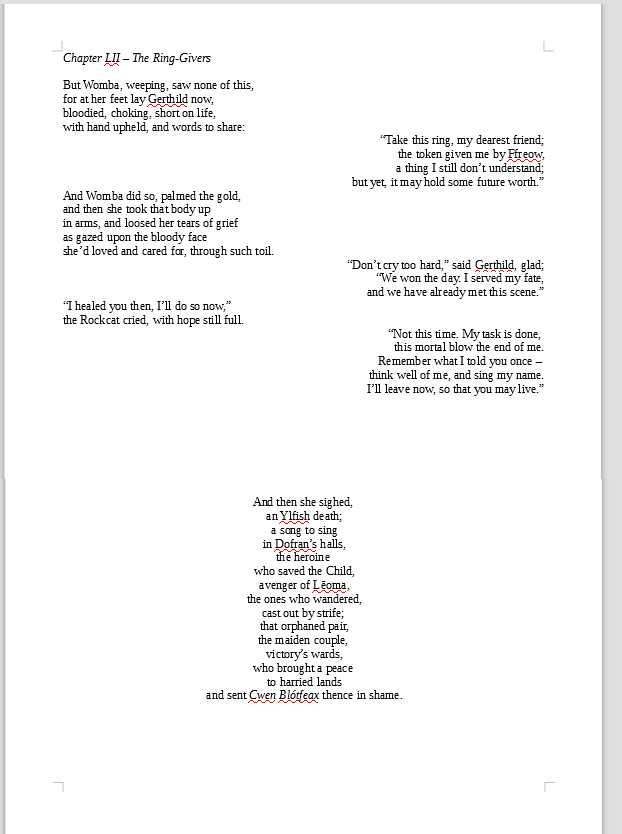A Return to Orality: Reciting the 'Saga', #1
Recent tutorial discussions having inspired me to try reciting - performing - some of the Saga , earlier tonight I gave it a go. Four passages, of varying length and dramatic import, were tested out, to see how they might be presented in a live, public-facing environment. So here follows a short reading of the 'Song of Haeleth of the Dawn's Light', which I think is my favourite 'poem-within-the-poem' if only for its deeply sincere elegaic tone, and the fact it was inspired by a Celtic, rather than Germanic, source - in which an elegy is sung for a brave swordswoman of the Ylfu people, Haeleth. Her vengeful sister, Gwearyffeth, has more than a hint of Gwalchmai (the Welsh prototype of Sir Gawain) about her. Inspired by the 12th Century Welsh bardic song 'The Killing of Hywel ab Owein' (Peryf ap Cedifor, 1170): And now for the beginning of the whole thing... In classic Old English formulaic fashion, the story begins not with the central character...


